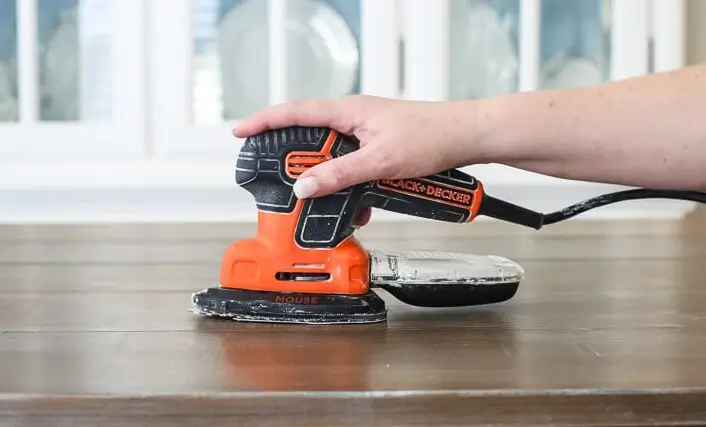A sander is a power tool that uses abrasive materials to smooth or shape surfaces. It can be used for various purposes, such as woodworking, metalworking, or painting. However, a sander can also be dangerous if not used properly. In this article, we will discuss some of the common mistakes that people make when using a sander, and how to avoid them.
The most important thing to remember when using a sander is to wear appropriate safety gear, such as goggles, gloves, and a dust mask. Sanding can produce a lot of dust, debris, and sparks, which can harm your eyes, skin, and lungs. You should also wear ear protection, as sanders can be very loud and damage your hearing.
Do Not Use the Wrong Type of Sander or Sandpaper
There are different types of sanders and sandpaper available, depending on the material and the desired result. For example, a belt sander is good for removing large amounts of material quickly, while an orbital sander is good for fine finishing. Similarly, sandpaper comes in different grits, from coarse to fine, depending on how smooth you want the surface to be. You should always choose the right type of sander and sandpaper for your project, and follow the manufacturer’s instructions. Using the wrong type of sander or sandpaper can damage the surface, cause uneven results, or waste time and energy.
Do Not Apply Too Much Pressure or Speed
Another common mistake that people make when using a sander is applying too much pressure or speed. This can cause the sander to overheat, wear out the sandpaper, or create gouges or swirl marks on the surface. You should let the sander do the work, and apply only light to moderate pressure. You should also adjust the speed of the sander according to the material and the sandpaper. Generally, lower speeds are better for softer materials and finer sandpaper, while higher speeds are better for harder materials and coarser sandpaper.
Do Not Sand Against the Grain or Across the Edges
When sanding wood, you should always sand along the direction of the wood grain, not against it. Sanding against the grain can tear the wood fibers, create scratches, or reduce the quality of the finish. You should also avoid sanding across the edges of the wood, as this can round them off or chip them. You should sand the edges parallel to the grain, or use a hand file or a sanding block for more control.
Do Not Forget to Clean the Surface and the Sander
After sanding, you should always clean the surface and the sander. You can use a vacuum, a tack cloth, or a damp rag to remove any dust or debris from the surface. This will prevent any contamination or adhesion problems when applying the finish. You should also clean the sander, especially the pad or the belt, to remove any buildup or residue. This will extend the life of the sander and the sandpaper, and improve the performance of the tool.
Conclusion
Sanding can be a rewarding and satisfying process, but it can also be risky if not done correctly. By following these simple tips, you can avoid some of the common mistakes that people make when using a sander, and achieve better results. Remember to always wear safety gear, use the right type of sander and sandpaper, apply the right amount of pressure and speed, sand along the grain and parallel to the edges, and clean the surface and the sander. Happy sanding!

